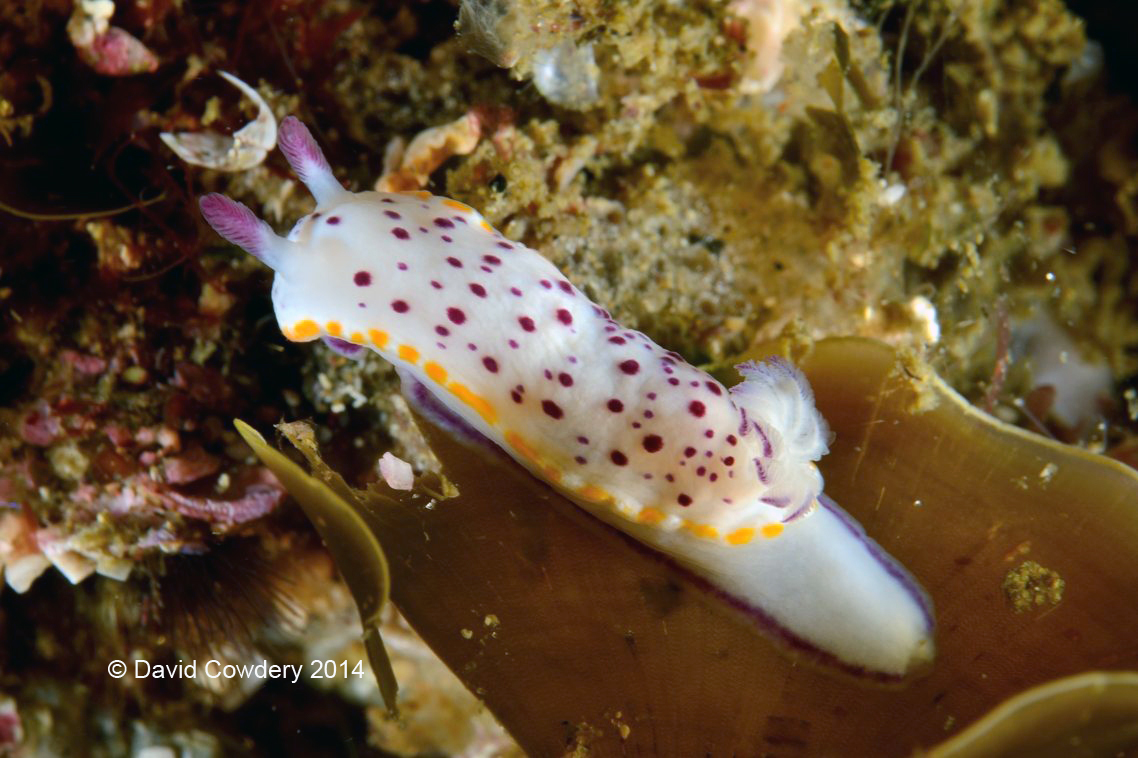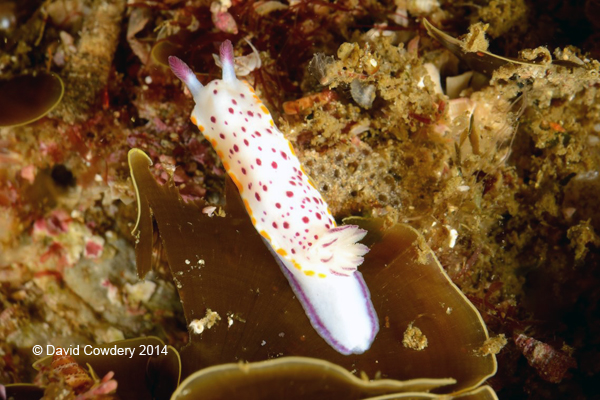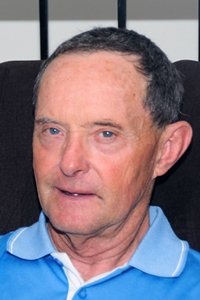 |
Mexichromis festiva (Angas, 1864)
Image courtesy of David CowderyPhoto taken at at Byron Bay, Australia
Mexichromis festiva photographed by David Cowdery at Byron Bay, Australia
 |
Mexichromis festiva (Angas, 1864) Dave was on assignment in San Francisco this week, so yours truly is filling in! Where have I seen this guy before? Many times in Indonesia if one is to rely on basic visual pattern recognition to make a tentative identification. Well, hold the horses! Most of what we know about Mexichromis festiva can be found on Bill Rudman's Sea Slug Forum. Although the forum is presently not active, it still remains in my estimation one of the foremost respositories of Opistobranch knowledge! Evidently M. festiva was one of the first sea slugs described from Australian waters. M. festiva is very similar to Mexichromis mariei which is probably what I saw in Bali! I suppose once again we will have to await on phylogenetic typing and DNA to sort all this out! In the meantime, the challenge is still on to find and photograph our elusive friends, the sea slugs! I'm sure Dave Cowdery would agree with this proposition!
|
San Diego, California
Dec., 2014
Send Mike email at mdmiller@cts.com
David Cowdery

Dave Cowdery is a retired biomedical engineer and Divemaster at Byron Bay Australia. He has over 5000 logged dives. He is a keen participant in trips organised by Graham Abbott at Diving4Images and has dived the tropics extensively from Cocos Keeling Islands east to Niue. 3 Camera equipment used Nikon D300 in Ikelite Housing with twin 125 substrobes and a 60mm Nikon macro lens. Dave has additional observations on our subject for this week Okenia atkinsonorum feeds on the bryozoan Pleurotoichus clathratus at Port Stephens (just north of Sydney Australia. The images in Colemans encyclopedia show this behaviour clearly and is also reported by Rudman. At Byron Bay (Australia's most easterly point and several hundred miles further north from Port Stephens). The behaviour is similar but the animals are sometimes seen on the red seaweed Delisea pulchra. This is usually at a depth of 8-10 meters.
Send Dave mail at divec@ozemail.com.au
|

|
